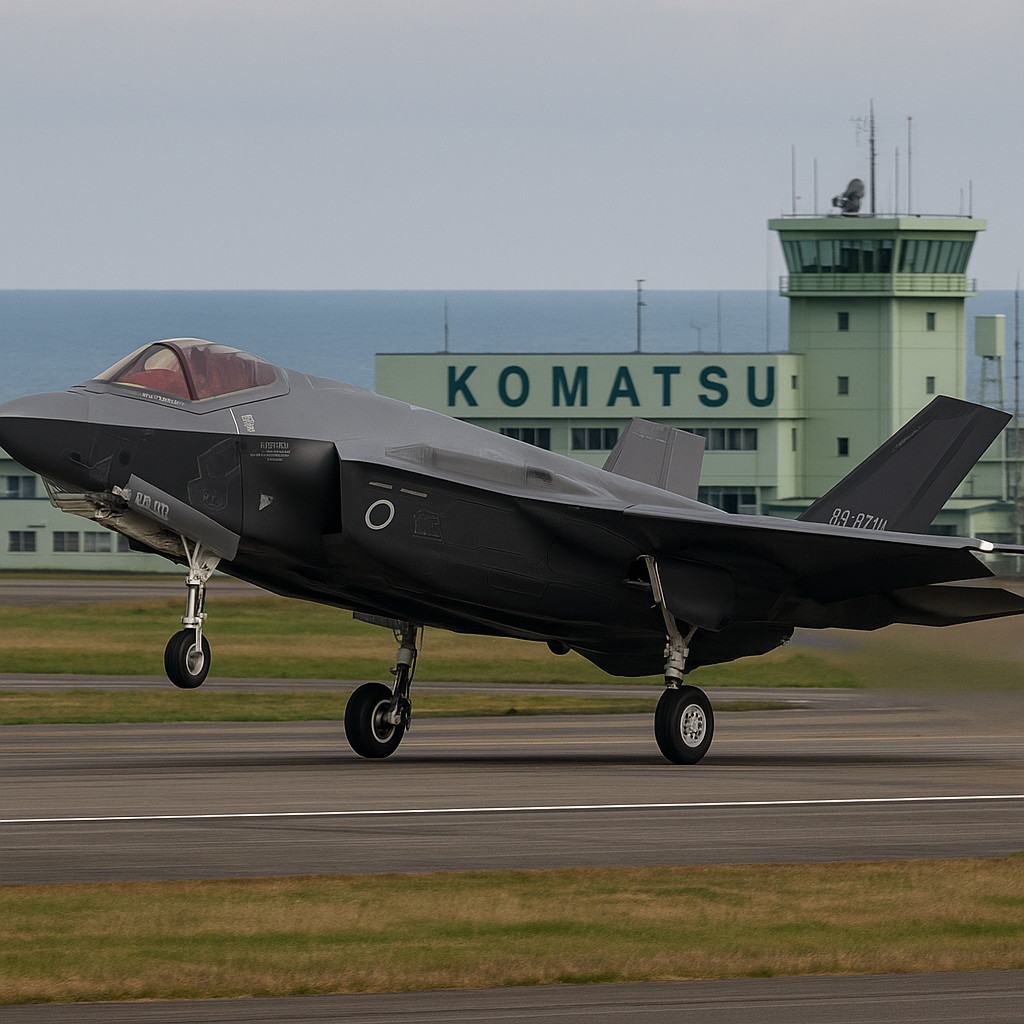On April 26, 2025, Japan took a big step forward in its defense efforts by welcoming the first American-made F-35 fighter jets to Komatsu Air Base. This base is located on the western coast of Japan and faces the Sea of Japan.
Komatsu Air Base Becomes Home to Japan’s First U.S.-Built F-35 Fighters
It plays a very important role in keeping Japan safe from possible threats in the region. The arrival of these modern fighter jets marks a major upgrade in Japan’s air power.
This event is significant not only for Japan but also for the expanding U.S.-Japan friendship. The F-35 Lightning II, a fifth-generation fighter jet, is well known throughout the world for its advanced technology and stealth. Having these jets in Japan helps the country become stronger in protecting its skies and seas. Komatsu Air Base is now the first location in Japan where these U.S.-built jets will fly as part of regular military missions.
Komatsu Air Base is special because it’s the only fighter base located along the Sea of Japan coast. That makes Komatsu a very useful location for watching over nearby waters and responding quickly to any military activity. With the arrival of the F-35, Japan now has a much better chance to act fast and protect its territory from growing military actions in nearby areas.
Woke or Weak? F-35 Fighter Jet Faces Scathing Attacks on Lockheed Martin from Trump Insider’s Circle
F-35 Technology Enhances Japan’s Modern Military Tools
One of the world’s most sophisticated fighter aircraft is the F-35 Lightning II. It has a special design that makes it hard to detect by radar. It also has high-tech sensors and powerful computers that can collect and share information very fast. This allows the pilot to see and respond to threats more quickly than in older aircraft. These features make the F-35 perfect for modern defense situations.
Japan’s new F-35s, including those deployed at Komatsu, come with a new setup called TR-3. This results in further improvements to the jet’s operation. The TR-3 version improves computer power and electronic warfare systems, which means the jet can protect itself and also help other friendly forces nearby. This is a very useful ability in the kinds of missions that Japan may face in its region, especially around Komatsu, where monitoring airspace is vital.
Japan has decided to buy a total of 147 F-35 jets. Out of these, 105 are the F-35A model, which takes off and lands like regular jets. The other forty-two are F-35Bs, which can land vertically like a helicopter after taking off from short runways. This makes them very flexible and allows them to be used from different types of ships and bases, such as Komatsu, which plays a key role in air operations.
Japan’s acquisition list for F-35s increased by 15 in 2023. This shows the country’s clear commitment to strengthening its air power with the latest technology. These jets are not just tools for flying; they are part of a full defense system that connects land, sea, and air operations. The integration of the F-35s into Komatsu helps ensure that Japan’s defense network is strong and ready across all directions.
KAI Seeks Strategic Edge as KF-21 Challenges U.S. F-35 Amid Diplomatic Rift
Strong International Collaboration Aids Japan’s F-35 Use Preparation
The F-35 is not the only aircraft used by Japan. It is also about working closely with other countries that use the same jet. In 2024, Japanese teams watched F-35 activities on an Italian aircraft carrier near their coast. This helped them learn how to use the aircraft better in different situations. Also, Japan allowed U.S. F-35B jets to take off and land on one of its ships, JS Kaga, near San Diego. This showed that their systems work well together.
These events are examples of how Japan is working with other nations that also operate the F-35. Learning from each other helps all the countries become stronger and more ready to face threats together.
Japan has long had a close defense relationship with the United States. After World War II, the two countries started working together to build peace and security in the region. Through special programs, Japan has received many advanced systems from the U.S. These consist of missile defense systems such as Patriot missiles and Aegis destroyers in addition to the F-35 fighters.
These systems work together to help Japan build a layered defense. That means they can stop different types of threats, such as enemy planes, missiles, and even cyber attacks. The F-35 adds another strong layer to this setup. Its ability to collect and share information with other systems makes it an important part of the larger defense network.
By placing the F-35s at Komatsu Air Base, Japan now has better tools to keep an eye on important areas like the Senkaku Islands and nearby waters. The jet can also help with missions that involve sea and land forces by using its advanced sensors to find and report targets quickly. This makes it useful in many situations and helps Japan stay ready for any challenges.

